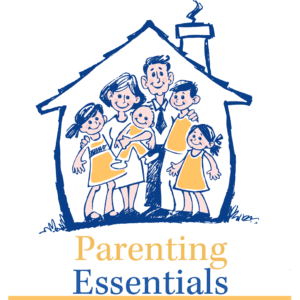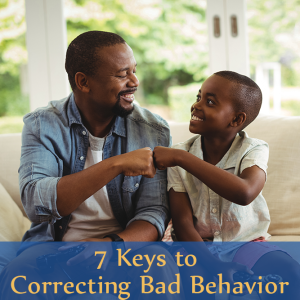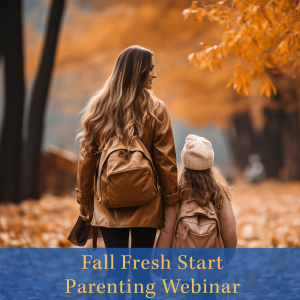6 Steps for Making Siblings Friends, Not Foes
One night, after my parents left to go on a date, my brother and I started fighting. I vividly remember the fight getting to the point where both of us were standing on a couch threatening each other with broomsticks.
This sad memory changed me. Many times over the years I’ve had that memory return, but with a goal attached to it. That goal was for my children to see each other as best friends throughout their lives.
Since I didn’t necessarily have experience with this concept, I had to do some careful research and planning.
Researching the Role of Siblings
What role do siblings play in each other’s lives? Are they meant to be best friends or biggest foes? Are siblings the ones to compete with and tear down, or are they ones to rejoice for and build up? How are proper sibling roles to be taught?
Consider some of the great literary and live sibling relationships of past generations:
Mary and Laura Ingalls [Little House on the Prairie books and TV program]
Moses and Aaron [Holy Bible]
Mary and Martha [Holy Bible]
Meg, Jo, Beth and Amy March [Little Women]
Laddie and Little Sister [Laddie]
Hansel and Gretel [Brothers Grimm]
The Von Trapp Children [The Von Trapp Family Singers & The Sound of Music]
The 7 Pontipee Brothers [Seven Brides for Seven Brothers]
Darcy and Georgiana [Pride and Prejudice]
Jane and Lizzy [Pride and Prejudice]
By and large siblings in these inspiring stories from history were an example of support, love, kindness and loyalty to each other and to their family. Many boys fought other boys to defend their family names, baby brothers, or a sister’s honor. And girls never spoke ill of their sisters and brothers. It would have been shameful to do so.
Sure, there were minor disputes that had to be worked through from time to time, but the constant support in their lives were their best friends — their siblings.
Obviously, stories of unkindness and sibling jealousy can also be found on occasion in these old-time stories. One example is when Jacob’s sons sold their younger brother, Joseph, into Egypt out of spite. Another example is in Shakespeare’s, “Tamming of the Shrew” when Catherine despised Bianca because her father loved Bianca more. However, these examples of negative sibling relationships are minimal in comparison to the abundance of positive and inspiring family bonds found in literature, poem, play and songs.
The State of Sibling Relationships Nowadays
According to British writer Jaymi McCann, in these years of excessive activities, appointments, and work and play date schedules, some families report having family time together an average of only 36 minutes daily on weekdays and 2.5 hours daily on weekends. This is less than 8 hours per week of family time.
Likewise, the Pew Research Center reports that working mothers are around their children about 11 hours weekly, while stay-at-home mothers are around their children approximately 20 hours weekly.
If families have such little time together, it’s no wonder relationships with siblings don’t seem to be developing as well as they did just a few generations ago. This also damages parent/child relationships.
When people don’t spend time together learning, working and playing, then they don’t know each other. They don’t connect deeply enough to weather storms peacefully and to develop meaningful, bonded relationships.
To be clear, time with a parent or sibling around is different than bonding time and relationship building time. To build relationships requires open conversation and shared projects. Many families nowadays are so tired after their non-family activities that they find themselves wanting to use their limited amount of time together to relax in front of the television or to update their status on Facebook.
Families spend way too much of their time at home in front of their screens instead of in meaningful conversation with each other.
In the early 1900s, children spent far more time with friends during after-school hours than children typically do today. This doesn’t have as much to do with the fact that children don’t like to play because they often don’t have time or don’t know how. Why? Because they haven’t had enough practice outside of structured play times at school or daycare.
Children and parents are over scheduled. Since children don’t get 4+ hours a day with friends after school that previous generations did, parents are pushing friend time more and more. Parents worry their children aren’t being social enough, so they often sacrifice the minimal hours children have with family to allow them to spend time with friends. That way, parents think, children can check that social requirement of having friends off the to-do list.
Another social change that has led to sibling disconnection is the adults’ belief that children need to be grouped by age for schooling and activities to feel comfortable. In all the positive sibling stories listed above, the children didn’t get segregated into groups of only same-age peers for the majority of the day and then go to activities with only same-age peers after school hours. Instead, they learned as families or in one-room school houses with their siblings and all ages of learners. Part of their education was learning how to get along with the young and the old.
It seems to me that a steady diet of age-based segregation of children has a tendency to groom children not to get along with each other. It also creates a sort of hierarchy. Plus, the children often lack confidence when conversing with people of all ages because they don’t have the practice. This could easily damage relationships with adults and parents — as well as relationships with siblings.
How to Make Siblings Friends Instead of Foes
Even though it may seem old fashioned, having loving sibling relationships is still possible today. Years ago, I set a goal for my children to become best friends with each other.
Here are six steps I took to successfully achieve my goal of creating a great sibling and family bonding environment:
1. Siblings need more time together. This time is not time with each other. Nor is it time with friends of each other. It’s especially not time spent “connecting” with each other on digital devices. Instead, it’s time spent playing, talking and learning with each other. From what I’ve noticed, time with parents and siblings seems to have the same effect as time only with siblings. This is because the sibling relationship is a healthy extension of the parent/child bond.
The only way to have more time with siblings is to have less time with friends. It’s true that children don’t seem to have as much time to run around the woods and neighborhood with friends as they did in days gone past, but that doesn’t mean friend time trumps sibling time.
Just like having less friend time, it’s wise to have less or even no digital distraction time — depending on the dependency on digital devices the child is displaying. If a child asks again and again for a device, then it’s a clear sign that he shouldn’t have it for his emotional and chemical health.
Our identities are formed by either our families or by those we spend the majority of our time with, so a wise parent will emphasize the importance of nurturing the family identity. The family identity will create confidence, a sense of belonging, and the power of self-identity.
2. Speak positively of sibling relationships. Just as there are T-shirts that say, “Big Brother” and, “Proud Big Brother,” there are also T-shirts that say, “I Hate My Brother” and, “My Sister Made Me Do It.” Don’t encourage by conversation, joke or signage any idea that would be contrary to your family relationship goals, no matter how funny or clever the T-shirt seems. It’s never a good idea to normalize contempt for family members, whether siblings or parents. It has become increasingly popular for others to try to bond with young people by making stereotypical negative remarks about brothers and sisters. This is manipulative bonding done in bad taste.
3. Love your role as parent. Some parents think the word, “kids” is a four-letter word. They dread the time they must spend with their children and the problem solving they’re required to do as part of their nurture role. If parents don’t embrace and love their roles as parents, then how can they expect children to embrace and love their roles as siblings?
Have you ever heard a child request that their siblings not play with them and their friend when the friend is visiting? This was not something I would allow at my home. When my children played with friends, the friends didn’t come first. Rather, the siblings came first. This meant that when friends came over or when my children attended parties, the siblings played too or attended the party as well. When one child played at a friend’s house, if the sibling wanted to go too, he could. In fact, I usually like them playing together for the sake of safety. If a child didn’t want to include siblings, then they were gently corrected. If the problem persisted, then the time playing with friends was over. In our home, siblings/family comes first.
4. Not only do the children play together, but they also serve each other. When a person serves and sacrifices for another, then they love each other more. Our family created customs of leaving special notes, gifts, and doing random kindnesses for each other. We even installed mailboxes for each family member at a place in our home so that they could more easily send each other love notes. Chores are often done for someone else as a surprise as well. Mom and dad also get in on the service fun by serving each other as a surprise example for the children.
5. Teach them how to disagree appropriately with each other when problems arise. One of the most basic and mature problem-solving skills a person can learn is how to disagree appropriately with others. My children learned to calmly explain what they understood about the other person, and then to calmly explain their opinion. They also learned how to listen to each other and how to show a person that their respectful disagreement was appreciated. Even many adults don’t know this skill. It makes a huge difference for family harmony.
6. Finally, deliberately create a home culture with family connectedness as the top priority. Fun invitations for parties, outings and activities will pour into all our homes in these fast-paced years, but we must learn to say no to more extravagance and more experiences. That will allow us to say yes to more family work, laughter and conversations. Additionally, when the family gets selfish or doesn’t feel as connected as it should, then parents should stop themselves and the family and have a reset so the family relationship goal is again the focus.
In our modern, fast-paced world, the family has taken a back seat to task lists, deadlines and accomplishments. We’re deliberately making that priority re-adjustment in our culture. The good news is it’s just as easy to adjust our home cultures to fit our family bonding goals . It’s possible for children to be best friends instead of best foes. Children simply need more time connecting with their siblings so they can build a life-long friendship.
Learn more about roles, family relationships and skills for creating happy sibling relationships at TeachingSelfGovernment.com





